#australian geographic
Text

Critically endangered swift parrots are under threat from logging in Tasmanian forests.
Image credit: Rob Blakers


#rob blakers#photographer#swift parrot#parrot#bird photography#australia#australian geographic#tasmania#forests#nature
19 notes
·
View notes
Text

Twelve-Wired Bird of Paradise by Jeremy T. Boot, Gouache.
Scientific name: Seleucidis Melanoleucus.
Conservation Status: Least Concern (Population Stable).
Native to the lowland rainforests of New Guinea and the neighbouring Salawait Island of Indonesia.
About the artist: Born in Java in 1948, Jeremy Boot arrived in Australia as an infant, and lived in South Australia. A self taught artist, he is a painter and illustrator of Australian wildlife in watercolour and gouache. His first solo exhibition was in Adelaide in 1977 buy he mainly works on commission and has completed work for Major Australian natural history publishers including Nocturnal Birds of Australia for Landsdowne Press. Boot also produces limited edition prints from his studio, now located in Noosa Queensland.
Links I got my info and this artwork from:
#twelve-wired bird of paradise#jeremy t. boot#australian artist#australian artists#ornithology art#ornithology#self taught artist#gouache#watercolor and gouache#watercolour and gouache#watercolour#watercolor#natural history#birds#bird#bird art#wikipedia#australian geographic#new guinea#indonesia
0 notes
Text
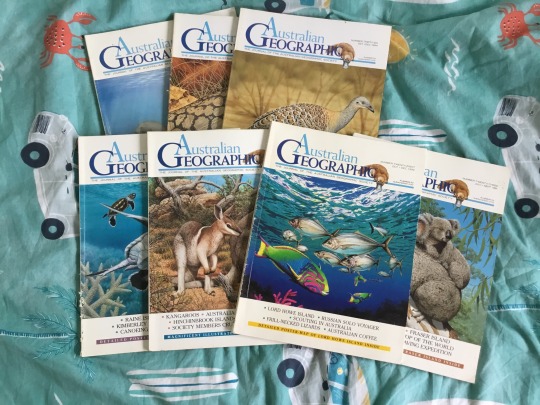
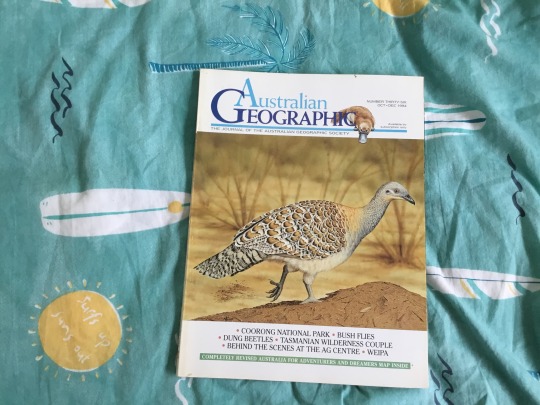
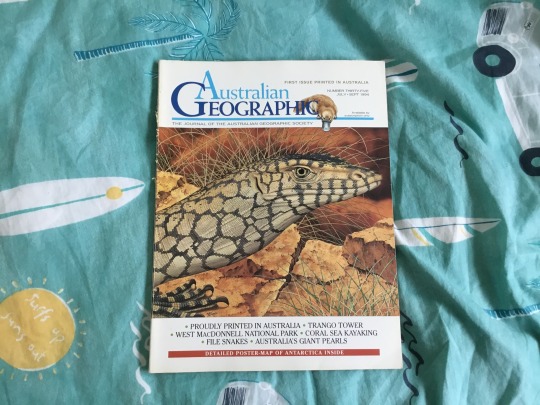

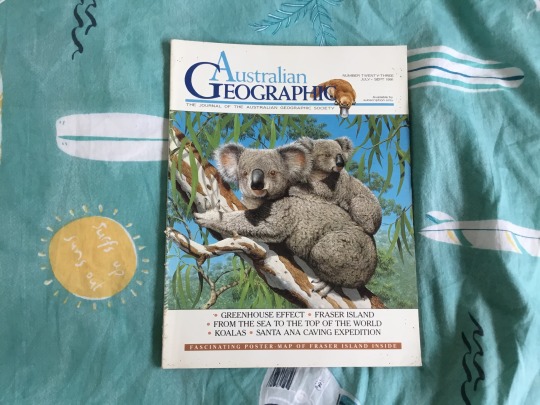



0 notes
Text
south africa but i've never been there also i'm drinking
HELLO MAGGOTS this is the good omens mascot here hello hello. my psychiatrist just spent today telling me how I won't be able to be out in college when it starts in May and I'll be misgendered etc etc it's all a good time. So my solution:


My darling cousin @imchronicallyonlinesowhat (the one who thought Sir Terry Pratchett looked like Sudha Murthy, was a kindly old woman and was married to Neil Gaiman because their book cover fonts were similar, OG maggots know the PAIN) who lives in South Africa asked me to make a South Africa post. FYI, she's moving to Australia for college, so you can be assured I shared my Australia posts with her she is SO prepared she won't say marmite instead of vegemite and she knows the Wibbles are inherently sexual. SOUTH AFRICA (I've only had a teeny weeny bit of cheap ass wine so far):
There a lot of white people there it's ineffable. There are enough of them there that my cousin regularly talks about not ever marrying someone who doesn't have some masala.
Afrikaans is a gorgeous language. I thought my cousin was showing me her Afrikaans notes once. She wasn't. It was her English notes, she just has the most illegible yet neat handwriting in the world.
They don't say yo but they say YOH and it sounds very much like a bass drum.
People at my cousin's school pump their hands in the air while saying jesus-jesus.
There's a trio of white boys that rule the school kind of like a genderswapped mean girls. They all look the same haircut-wise, they're Catholic and they're called the Triumvirate.
I'm realising here that my knowledge of South Africa is limited to cuzzy's school. But the wine is shit and I promised my blood-relative so I am continuing.
The books are fucking expensive and so everyone has to pirate shit. This sounds like the US.
Everyone is TALL. Like VERY VERY VERY VERY VERY TALL. The standard of height is insanely different from India. TALL.
If you don't have a last name you're going to get into legal trouble.
The no hat no play rule applies here as well as Australia apparently.
The wine cost like 2.5 dollars in USD if my conversion rates are correct, it smells like battery acid and tastes of rotted grapes. Nothing to do with South Africa, it's just that I cannot remember a single other thing about South Africa other than it's a country in Africa that's presumably in the South.
My braincells are already frying. For my cousin's sake, I'm going to compile all my Australia posts here so that she knows what to expect! Australian maggots your continent is about to be graced with the Good Omens Mascot bloodline. Notably the one with the Sudha Murthy fuck up so that's doubly fun. @howmanyholesinswisscheese, @im-a-sentient-magic-carpet, @madfangirlontheloose @obsessed-sketches @drconstellation and any other Aussie maggots be prepared and welcome her.
Toot Toot Chugga Chugga by the Wiggles is an Ineffable Husbands Song
Deaths in Australia in 2015, an ask
VEGEMITE IS NOT MARMITE, another passionate ask
Pt I Australia but I've never been there
Pt II Australia but I've never been there
Oh I hate cheap wine. @imchronicallyonlinesowhat I hope you appreciate this, blood of mine. I'm such a great cousin.
#good omens mascot#weirdly specific but ok#asmi#maggots#south africa#australia#australian fandom#shitposting#geographical shitposting#only me man#im bleh#already#not even from alcohol it's just that it tastes like balls#ew#south african fandom#tumblr#idk what to tag this#WAHOO
219 notes
·
View notes
Text
someone really needs to make out with porsche when he's sober for once
#kinnporsche#sbs liveblogs#I'm on ep 5#look#is there#and keep in mind#I know nothing about thailand#is there a reason that everyone who speaks english speaks it with an australian accent?#because that threw me off at first#and I'm still confused#is this about the actors in particular?#or is thailand just like that?#I know geographically the countries aren't like. impossibly far away from each other#but other than that I have no knowledge
28 notes
·
View notes
Text
i need to go to bed, here’s my list as it currently stands:
jimmy - yellow canary
tango - phoenix
impulse - black and yellow cockatoo
bdubs - tawny frogmouth
grian - scarlet macaw
scar - to-be-determined magpie (or a crow)
martyn - budgerigar
cleo - raven (or a harpy)
scott - turquoise browed motmot
pearl - lesser blue-eared starling
ren - fairy wren
bigb - chamrosh
joel - kookaburra
etho - griffin
#.txt#reblogs turned off because i’m still not sure abt all of these jhvsj#i’m open to suggestions if ppl have any other ideas#yes i do think it’s funny that there are australian birds on this list and pearl is none of them#tbf i was mainly going by vibes and appearance#not geographical location#anyways. GOODNIGHT
31 notes
·
View notes
Note
https://vt.tiktok.com/ZSLkPRb2j/
One month later: BREAKING NEWS! Tottenham sack manager Ange Postecoglou!
😭😭 - Sources say he was ABUSIVE and UNETHICAL with his coaching style
i like his funny words... little aussie man...
context
#i like it when australians yell i can never take them seriously#national geographic ass voice while angry... narrate me walking away from you yes 'the small but mighty black swan waddles away forcefully'#anyways! ty for making me know of him im now his biggest fan. yell at those boys sir!!#asks#friends#tiktoks#ali 🇵🇰
2 notes
·
View notes
Note
what do you think the godslayer's favorite store at the mall would be. Everyone thinks Rumi would be a Claire's enjoyer but personally I think they would go absolutely buck wild for bath and body works and try to walk around and sniff every candle in the store. Peter gets overstimulated because of all the smells so he just stands outside and waits for Rumi to come back with like ten different body sprays, three triple wick candles and a hand sanitizer.
im australian which will likely make this shit really funny.
peter sqloint: australian geographic. literally just COOL science shit in there man he is having a wild time getting science sets and looking at them i bet he can find stuff on rocks in there he would buy dinosaur water egg because its like a rock but not. OH OH THOSE GROW YOUR OWN CRYSTAL THINGS OMG!!! oh there is SO much in there man. heaven on earth.
rumi: dusk. it is literally just a candle shop n stuff i think rumi would thrive in there for sure. rumi likess nice smelling stuff okay. let them relax. or like somewhere with soap stuff and bathbombs yeah you're so right.
thanatos: bunnings warehouse. get that bitch a big pipe bitches love big pipe big supplies big pipe and screws and bolts and MASSIVE plant pot okay?? big pipe especially
exandroth: and idk about exandroth but like if there was a bug shop i think that would be exandroth's happy place. amongst the creatures. please please god let him hang around bugs oh my god.
#📚 my posts#✉️ mail#me and peter shared autism we MUST go into australian geographic#holy pilgrimage
3 notes
·
View notes
Note
Hey king, thoughts on slugs?
well, I hadn't much considered my thoughts on slugs until now! until now I would have considered myself ambivalent on slugs!
however, now, the longer I consider them the more I can say that I do enjoy a good slug..... they're just funky little guys, huh!
as with most small small small creatures, they worry me sometimes because they are so small and easily stepped on, and I'd like for them to be safe. if I think about them too hard in the rain I get anxiety. same with worms n snails
I would say I don't really like them eating our vegetable plants but tbh they don't even do that very much! there are plenty of other things for them to eat out in the garden, I think, or perhaps we simply don't have many slugs in the garden........ when they do have a nibble I can't really fault them for that. that's just what slugs do
they're talented at what they do, and what they do is..... be slugs....? idk. they're fascinating and slimy. now I'm thinking of going down a research rabbit hole about slugs
slugs!!! slugs are here
10 notes
·
View notes
Text

Alligator with butterflies
Image credit: Ama la Vida
232 notes
·
View notes
Note
I dont understand whats so funny about you being "Australian"
I think youre cool either way
i like how you put australian in quotation marks like its a slur or something
#ty tho LMFAOOOO#its funny 2 clown on australians cuz were so irrelevant#like were so far away geographically from europe/the americas#and the timezone.....#ask#edit: i saw ur other ask and i know u didnt mean it that way but it made me laugh LMAO ty
16 notes
·
View notes
Photo

Happy Reconciliation Day, Australian Capital Territory!
#Australia#Aussie#Australian Capital Territory#ACT#Oceania#map#geograph#travel#t-shirt lovers#t-shirt collection#black t-shirt#black t-shirts#shopping queen
0 notes
Text
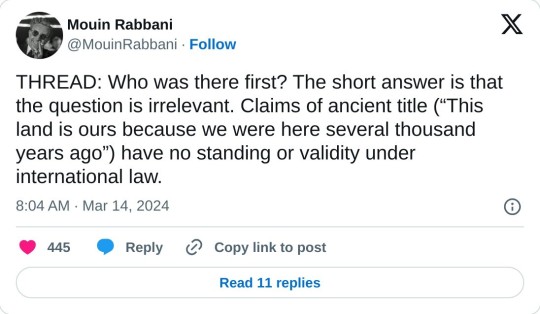
twitter thread by Mouin Rabbani
March 14, 2024
Who was there first? The short answer is that the question is irrelevant. Claims of ancient title (“This land is ours because we were here several thousand years ago”) have no standing or validity under international law.
For good reason, because such claims also defy elementary common sense. Neither I nor anyone reading this post can convincingly substantiate the geographical location of their direct ancestors ten or five or even two thousand years ago.
If we could, the successful completion of the exercise would confer exactly zero property, territorial, or sovereign rights.
As a thought experiment, let’s go back only a few centuries rather than multiple millennia. Do South Africa’s Afrikaners have the right to claim The Netherlands as their homeland, or even qualify for Dutch citizenship, on the basis of their lineage?
Do the descendants of African-Americans who were forcibly removed from West Africa have the right to board a flight in Atlanta, Port-au-Prince, or São Paolo and reclaim their ancestral villages from the current inhabitants, who in all probability arrived only after – perhaps long after – the previous inhabitants were abducted and sold into slavery half a world away?
Do Australians who can trace their roots to convicts who were involuntarily transported Down Under by the British government have a right to return to Britain or Ireland and repossess homes from the present inhabitants even if, with the help of court records, they can identify the exact address inhabited by their forebears? Of course not.
In sharp contrast to, for example, Native Americans or the Maori of New Zealand, none of the above can demonstrate a living connection with the lands to which they would lay claim.
To put it crudely, neither nostalgic attachment nor ancestry, in and of themselves, confer rights of any sort, particularly where such rights have not been asserted over the course of hundreds or thousands of years.
If they did, American English would be the predominant language in large parts of Europe, and Spain would once again be speaking Arabic.
Nevertheless, the claim of ancient title has been and remains central to Zionist assertions of not only Jewish rights in Palestine, but of an exclusive Jewish right to Palestine.
For the sake of argument, let’s examine it. If we put aside religious mythology, the origin of the ancient Israelites is indeed local.
In ancient times it was not unusual for those in conflict with authority or marginalized by it to take to the more secure environment of surrounding hills or mountains, conquer existing settlements or establish new ones, and in the ultimate sign of independence adopt distinct religious practices and generate their own rulers. That the Israelites originated as indigenous Canaanite tribes rather than as fully-fledged monotheistic immigrants or conquerors is more or less the scholarly consensus, buttressed by archeological and other evidence. And buttressed by the absence of evidence for the origin stories more familiar to us.
It is also the scholarly consensus that the Israelites established two kingdoms, Judah and Israel, the former landlocked and covering Jerusalem and regions to the south, the latter (also known as the Northern Kingdom or Samaria) encompassing points north, the Galilee, and parts of contemporary Jordan. Whether these entities were preceded by a United Kingdom that subsequently fractured remains the subject of fierce debate.
What is certain is that the ancient Israelites were never a significant regional power, let alone the superpower of the modern imagination.
There is a reason the great empires of the Middle East emerged in Egypt, Mesopotamia, Persia, and Anatolia – or from outside the region altogether – but never in Palestine.
It simply lacked the population and resource base for power projection. Jerusalem may be the holiest of cities on earth, but for almost the entirety of its existence, including the period in question, it existed as a village, provincial town or small city rather than metropolis.
Judah and Israel, like the neighboring Canaanite and Philistine entities during this period, were for most of their existence vassal states, their fealty and tribute fought over by rival empires – Egyptians, Assyrians, Babylonians, etc. – rather than extracted from others.
Indeed, Israel was destroyed during the eighth century BCE by the Assyrians, who for good measured subordinated Judah to their authority, until it was in the sixth century BCE eliminated by the Babylonians, who had earlier overtaken the Assyrians in a regional power struggle.
The Babylonian Exile was not a wholesale deportation, but rather affected primarily Judah’s elites and their kin. Nor was there a collective return to the homeland when the opportunity arose several decades later after Cyrus the Great defeated Babylon and re-established a smaller Judah as a province of the Persian Achaemenid empire. Indeed, Mesopotamia would remain a key center of Jewish religion and culture for centuries afterwards.
Zionist claims of ancient title conveniently erase the reality that the ancient Israelites were hardly the only inhabitants of ancient Palestine, but rather shared it with Canaanites, Philistines, and others.
The second part of the claim, that the Jewish population was forcibly expelled by the Romans and has for 2,000 years been consumed with the desire to return, is equally problematic.
By the time the Romans conquered Jerusalem during the first century BCE, established Jewish communities were already to be found throughout the Mediterranean world and Middle East – to the extent that a number of scholars have concluded that a majority of Jews already lived in the diaspora by the time the first Roman soldier set foot in Jerusalem.
These communities held a deep attachment to Jerusalem, its Temple, and the lands recounted in the Bible. They identified as diasporic communities, and in many cases may additionally have been able to trace their origins to this or that town or village in the extinguished kingdoms of Israel and Judah. But there is no indication those born and bred in the diaspora across multiple generations considered themselves to be living in temporary exile or considered the territory of the former Israelite kingdoms rather than their lands of birth and residence their natural homeland, any more than Irish-Americans today feel they properly belong in Ireland rather than the United States.
Unlike those taken in captivity to Babylon centuries earlier, there was no impediment to their relocation to or from their ancestral lands, although economic factors appear to have played an important role in the growth of the diaspora.
By contrast, those traveling in the opposite direction appear to have done so, more often than not, for religious reasons, or to be buried in Jerusalem’s sacred soil.
Nations and nationalism did not exist 2,000 years ago.
Nor Zionist propagandists in New York, Paris, and London incessantly proclaiming that for two millennia Jews everywhere have wanted nothing more than to return their homeland, and invariably driving home rather than taking the next flight to Tel Aviv.
Nor insufferably loud Americans declaring, without a hint of irony or self-awareness, the right of the Jewish people to Palestine “because they were there first”.
Back to the Romans, about a century after their arrival a series of Jewish rebellions over the course of several decades, coupled with internecine warfare between various Jewish factions, produced devastating results.
A large proportion of the Jewish population was killed in battle, massacred, sold into slavery, or exiled. Many towns and villages were ransacked, the Temple in Jerusalem destroyed, and Jews barred from entering the city for all but one day a year.
Although a significant Jewish presence remained, primarily in the Galilee, the killings, associated deaths from disease and destitution, and expulsions during the Roman-Jewish wars exacted a calamitous toll.
With the destruction of the Temple Jerusalem became an increasingly spiritual rather than physical center of Jewish life. Jews neither formed a demographic majority in Palestine, nor were the majority of Jews to be found there.
Many of those who remained would in subsequent centuries convert to Christianity or Islam, succumb to massacres during the Crusades, or join the diaspora. On the eve of Zionist colonization locally-born Jews constituted less than five per cent of the total population.
As for the burning desire to return to Zion, there is precious little evidence to substantiate it. There is, for example, no evidence that upon their expulsion from Spain during the late fifteenth century, the Sephardic Jewish community, many of whom were given refuge by the Ottoman Empire that ruled Palestine, made concerted efforts to head for Jerusalem. Rather, most opted for Istanbul and Greece.
Similarly, during the massive migration of Jews fleeing persecution and poverty in Eastern Europe during the nineteenth century, the destinations of choice were the United States and United Kingdom.
Even after the Zionist movement began a concerted campaign to encourage Jewish emigration to Palestine, less than five per cent took up the offer. And while the British are to this day condemned for limiting Jewish immigration to Palestine during the late 1930s, the more pertinent reality is that the vast majority of those fleeing the Nazi menace once again preferred to relocate to the US and UK, but were deprived of these havens because Washington and London firmly slammed their doors shut.
Tellingly, the Jewish Agency for Israel in 2023 reported that of the world’s 15.7 million Jews, 7.2 million – less than half – reside in Israel and the occupied Palestinian territories.
According to the Agency, “The Jewish population numbers refer to persons who define themselves as Jews by religion or otherwise and who do not practice another religion”.
It further notes that if instead of religion one were to apply Israel’s Law of Return, under which any individual with one or more Jewish grandparent is entitled to Israeli citizenship, only 7.2 of 25.5 million eligible individuals (28 per cent) have opted for Zion.
In other words, “Next Year in Jerusalem” was, and largely remains, an aspirational religious incantation rather than political program. For religious Jews, furthermore, it was to result from divine rather than human intervention.
For this reason, many equated Zionism with blasphemy, and until quite recently most Orthodox Jews were either non-Zionist or rejected the ideology altogether.
Returning to the irrelevant issue of ancestry, if there is one population group that can lay a viable claim of direct descent from the ancient Israelites it would be the Samaritans, who have inhabited the area around Mount Gerizim, near the West Bank city of Nablus, without interruption since ancient times.
Palestinian Jews would be next in line, although unlike the Samaritans they interacted more regularly with both other Jewish communities and their gentile neighbors.
Claims of Israelite descent made on behalf of Jewish diaspora communities are much more difficult to sustain. Conversions to and from Judaism, intermarriage with gentiles, absorption in multiple foreign societies, and related phenomena over the course of several thousand years make it a virtual certainty that the vast majority of Jews who arrived in Palestine during the late 19th and first half of the 20th century to reclaim their ancient homeland were in fact the first of their lineage to ever set foot in it.
By way of an admittedly imperfect analogy, most Levantines, Egyptians, Sudanese, and North Africans identify as Arabs, yet the percentage of those who can trace their roots to the tribes of the Arabian Peninsula that conquered their lands during the seventh and eighth centuries is at best rather small.
Ironically, a contemporary Palestinian, particularly in the West Bank and Galilee, is likely to have more Israelite ancestry than a contemporary diaspora Jew.
The Palestinians take their name from the Philistines, one of the so-called Sea Peoples who arrived on the southern coast of Canaan from the Aegean islands, probably Crete, during the late second millennium BCE.
They formed a number of city states, including Gaza, Ashdod, and Ashkelon. Like Judah and Israel they existed primarily as vassals of regional powers, and like them were eventually destroyed by more powerful states as well.
With no record of their extermination or expulsion, the Philistines are presumed to have been absorbed by the Canaanites and thereafter disappear from the historical record.
Sitting at the crossroads between Asia, Africa, and Europe, Palestine was over the centuries repeatedly conquered by empires near and far, absorbing a constant flow of human and cultural influences throughout.
Given its religious significance, pilgrims from around the globe also contributed to making the Palestinian people what they are today.
A common myth is that the Palestinian origin story dates from the Arab-Muslim conquests of the seventh century. In point of fact, the Arabs neither exterminated nor expelled the existing population, and the new rulers never formed a majority of the population.
Rather, and over the course of several centuries, the local population was gradually Arabized, and to a large extent Islamized as well.
So the question as to who was there first can be answered in several ways: “both” and “irrelevant” are equally correct.
Indisputably, the Zionist movement had no right to establish a sovereign state in Palestine on the basis of claims of ancient title, which was and remains its primary justification for doing so.
That it established an exclusivist state that not only rejected any rights for the existing Palestinian population but was from the very outset determined to displace and replace this population was and remains a historical travesty.
That it as a matter of legislation confers automatic citizenship on millions who have no existing connection with the land but denies it to those who were born there and expelled from it, solely on the basis of their identity, would appear to be the very definition of apartheid.
The above notwithstanding, and while the Zionist claim of exclusive Israeli sovereignty in Palestine remains illegitimate, there are today several million Israelis who cannot be simply wished away.
A path to co-existence will need to be found, even as the genocidal nature of the Israeli state, and increasingly of Israeli society as well, makes the endeavor increasingly complicated.
The question, thrown into sharp relief by Israel’s genocidal onslaught on the Palestinian population of the Gaza Strip, is whether co-existence with Israeli society can be achieved without first dismantling the Israeli state and its ruling institutions.
248 notes
·
View notes
Text
Namib Sand Geckos: these nocturnal geckos have biofluorescent markings that emit a bright, neon-green glow when exposed to the moonlight

This species (Pachydactylus rangei) is found only in the Namib Desert, which stretches across Namibia, Angola, and South Africa; the geckos typically inhabit the arid, coastal region known as the Skeleton Coast.
In order to escape from the blistering heat of the desert, they use their webbed feet to burrow down into the sand during the day, and then emerge only at night, when the temperature has finally dropped. The webbing on their feet also enables them to run more easily across the dunes.
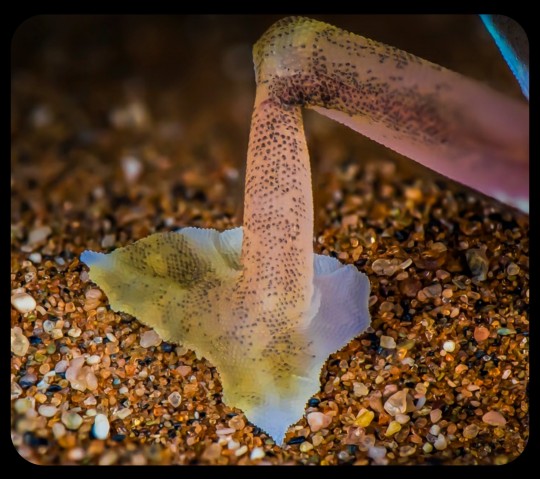
Namib sand geckos are covered in translucent scales, but they also have a strangely colorful appearance, as the colors/shades of their circulatory system, spinal column, internal organs, and optical membranes remain partially visible through the skin, producing various shades of pink, dark blue, purple, magenta, orange, and yellow.
They also have several distinctive markings running along their lower flank and encircling their eyes; these markings are known to fluoresce when exposed to UV light (including moonlight), emitting a bright, neon-green glow.

Some researchers have theorized that the biofluorescent markings may act as a signal to other geckos, allowing them to locate one another in the vast, desolate expanse of the desert, as this paper explains:
The fluorescent areas of P. rangei are concentrated around the eyes and along the lower flanks. This positioning is practically invisible to predators with a higher perspective (e.g. birds and jackals), but highly conspicuous from a gecko’s perspective. As P. rangei is sociable but generally solitary, and occurs at low population densities, such a signal might serve to locate conspecifics over greater distances ...

Encounters in P. rangei might serve purposes beyond mating opportunities: as the Namib desert has extremely low precipitation, fog is a key water source for its flora and fauna. Fog condenses on the bodies of the geckos, and they lick it from their faces. In husbandry, we have observed individuals licking water from conspecifics, taking advantage of a much greater available surface area.
Additionally, after short periods of isolation, the geckos run to meet each other. The combination of vital hydration with socialisation might reinforce signals that enable such meetings, and the cost of visibility to predators with higher vantage points, might constrain the signals to regions best visible from eye-level and below.
The Namib sand gecko is the only terrestrial vertebrate that is known to use an iridophore-based form of biofluorescence (you can find a more detailed explanation of that mechanism in the article mentioned above). The fluorescent dermal markings are also unique to this species.

Sources & More Info:
Scientific Reports: Neon-green fluorescence in the desert gecko Pachydactylus rangei caused by iridophores
Animal Diversity Web: Pachydactylus rangei
Dr. Mark D. Scherz's Blog: A Neon-Green Glowing Gecko!
Australian Geographic: Skeleton Coast - Namibia's strange desert dwellers
#herpetology#reptiles#gecko#Pachydactylus rangei#namib sand gecko#palmatogecko#namib desert#namibia#biofluorescence#animals that glow#lizards#cute animals#biology#nature#africa#squamata#web-footed gecko#cool animals#geckos#South Africa#Angola#Skeleton Coast#wildlife#not an arthropod#but still pretty cool
173 notes
·
View notes